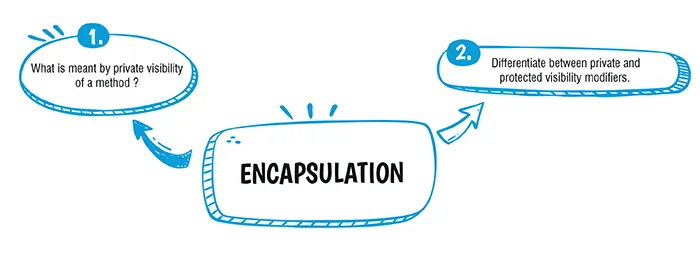Home / Board / ICSE / important Questions / Class 10 / Computer Application / Encapsulation
Table of Contents

Ans. (a) Private
Explanation:
All the data members should be made private to ensure the highest security of data. In special cases we can use public or protected access, but it is advised to keep the data members private always.
Ans. (b) Final
Explanation:
A static method definition must start with the static keyword.
Explanation:
Private methods can be used in the class in which they are defined. Outside that class they cannot be accessed.
Explanation:
Private is the most restricted access specifier which is accessible only in its own class.Protected members are accessible by the classes of the same package or by a child class in any other package.
Explanation:
(i) int n; (argument variable)
(ii) x = 7; (class variable)
(iii) a = 6; (local variable)
(iv) y = 2; (instance variable)
Download Mind Map of this chapter
Download NowWant to Practice Mock Tests of this chapter
Practice NowDownload Important Questions of this chapter
Download Now| Chapter No. | Chapter Name |
|---|---|
| Chapter 1 | Revision of Class IX Syllabus |
| Chapter 2 | Class as a Basis of all Computation |
| Chapter 3 | User - defined Methods |
| Chapter 4 | Constructors |
| Chapter 5 | Library classes |
| Chapter 6 | Encapsulation |
| Chapter 7 | Arrays |
| Chapter 8 | String handling |
| Chapter Wise Important Questions for ICSE Board Class 10 Computer Applications |
|---|
| Revision of Class IX Syllabus |
| Class as a Basis of all Computation |
| User - defined Methods |
| Constructors |
| Library classes |
| Encapsulation |
| Arrays |
| String handling |
CBSE Important Questions Class 10
ICSE Important Questions Class 10
CBSE Important Questions Class 10
ICSE Important Questions Class 10